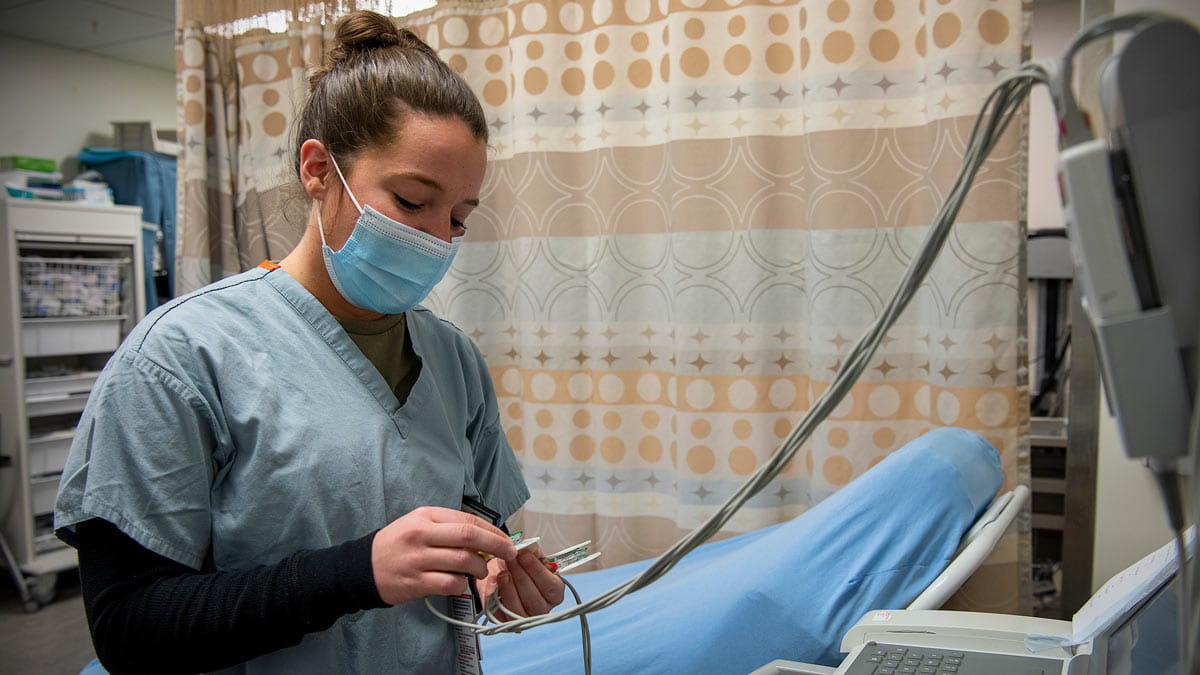How the Schott became the place to get The Shot
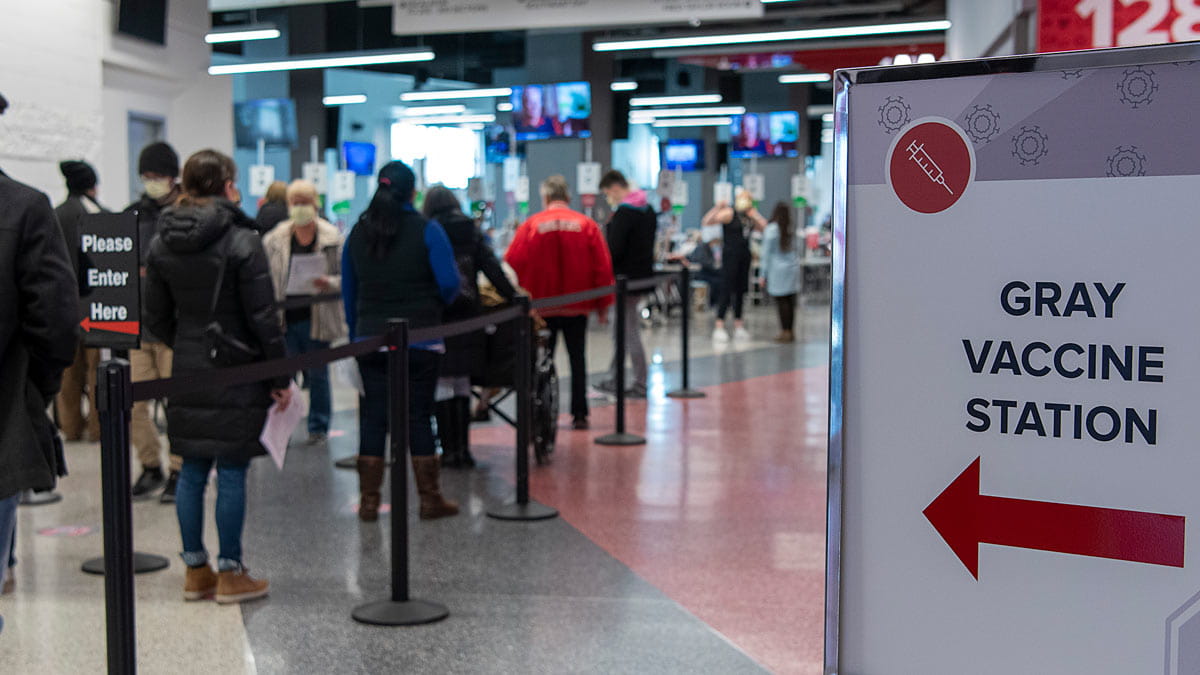
Editor's Note: As of 5/27/21, all COVID-19 vaccinations are administered at East Hospital. Learn how to schedule.
As the sun sets in Columbus, Ohio, the line for the COVID-19 vaccine clinic at the Jerome Schottenstein Center slows to a trickle.
Inside, the final patients of the day sit down to tables in the concourse and roll up their sleeves.
A deep bass beat thumps throughout the arena.
Behind thick curtains, an announcer thanks the evening’s sponsors. The ice resurfacer clears the rink. As The Ohio State University men’s hockey team prepares to take on Minnesota, a health care worker arranges a bin of syringes.
 During the COVID-19 pandemic, the Schottenstein Center has served a dual role as sports arena and vaccination hub for central Ohioans.
During the COVID-19 pandemic, the Schottenstein Center has served a dual role as sports arena and vaccination hub for central Ohioans.
Everyone and everything has had to adapt since the arrival of COVID-19.
Nowhere is that more clear than at the Schottenstein Center, where a doctor monitors patient vaccinations from what used to be a beer stand. Since January, the home of Ohio State basketball and men’s hockey—serendipitously nicknamed “the Schott”—has served as The Ohio State University Wexner Medical Center’s all-day mass COVID-19 vaccination site, capable of accommodating more than 3,000 patients a day.
Meanwhile, Ohio State’s home games have gone on as scheduled.
Right before Christmas, managers at the Schottenstein Center got word that the Ohio State Wexner Medical Center was eyeing the 770,000-square-foot Columbus landmark as a possible location. It was an unexpected request for a venue more accustomed to hosting basketball and Bruce Springsteen, but the Schott was built—and renovated in 2018—to be flexible.
Ohio State medical staff arrived to tour the space, trying to visualize how a pop-up clinic might look atop the Schott’s polished terrazzo concourse floors, nestled between lighted Script Ohio signs and nacho counters. It took a bit of a mental leap, says Ohio State Associate Athletic Director of Facilities and Events Colin Thompson, but he could envision it. His team drew up designs and dug into work just after the holidays.
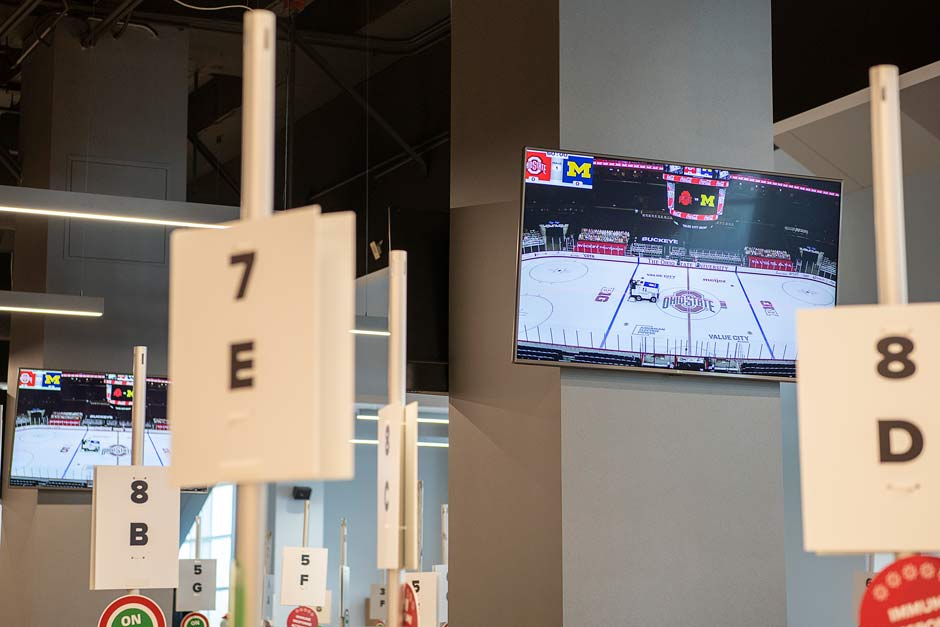
–Gene Smith, Ohio State Director of Athletics
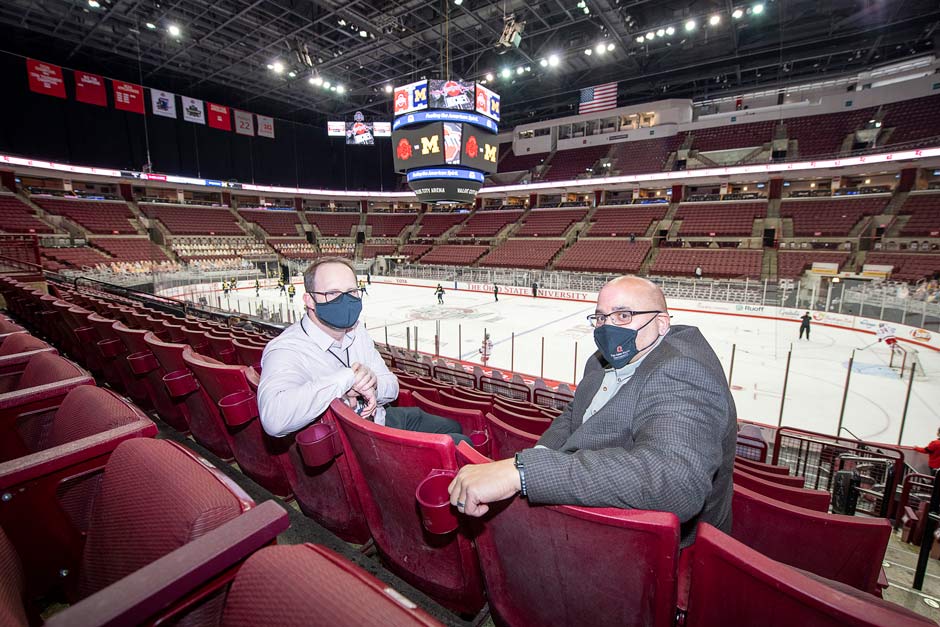
–Scott Dickson, Associate General Manager, the Schottenstein Center
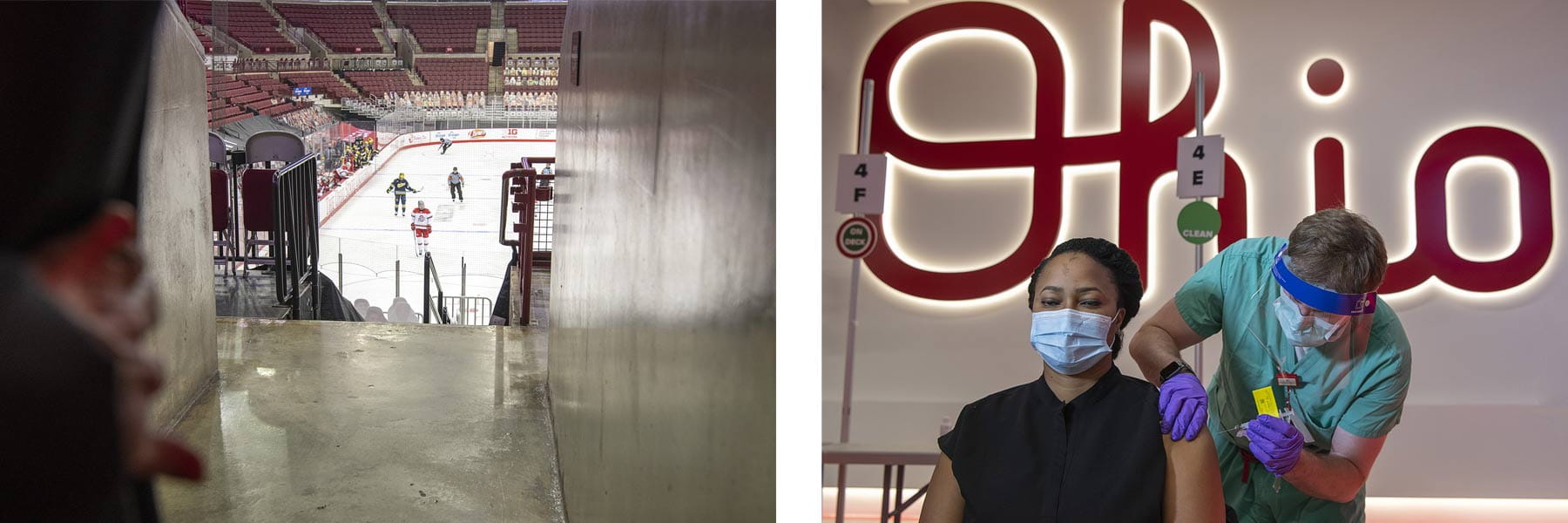 Curtains help shield entries between the sports arena and vaccination area.
Curtains help shield entries between the sports arena and vaccination area.Their initial plans cleanly separated sports from shots.
Placing athletics on the north side of the center and the clinic on the south side seemed a fine strategy until they learned more about the patients who fell into Phase 1B of the vaccine rollout. They realized they’d need to shrink the walking distance and provide ample handicapped-accessible parking for what would be a largely elderly crowd.
The fix turned out to be relatively easy. They shifted the same footprint by flipping south and north, maintaining a separate entrance for the athletes, athletic staff and media while positioning vaccine patients just steps from the Schott’s northeast rotunda. They also lined up a fleet of 65 wheelchairs and arranged for a shuttle to drive up and down nearby parking lots.
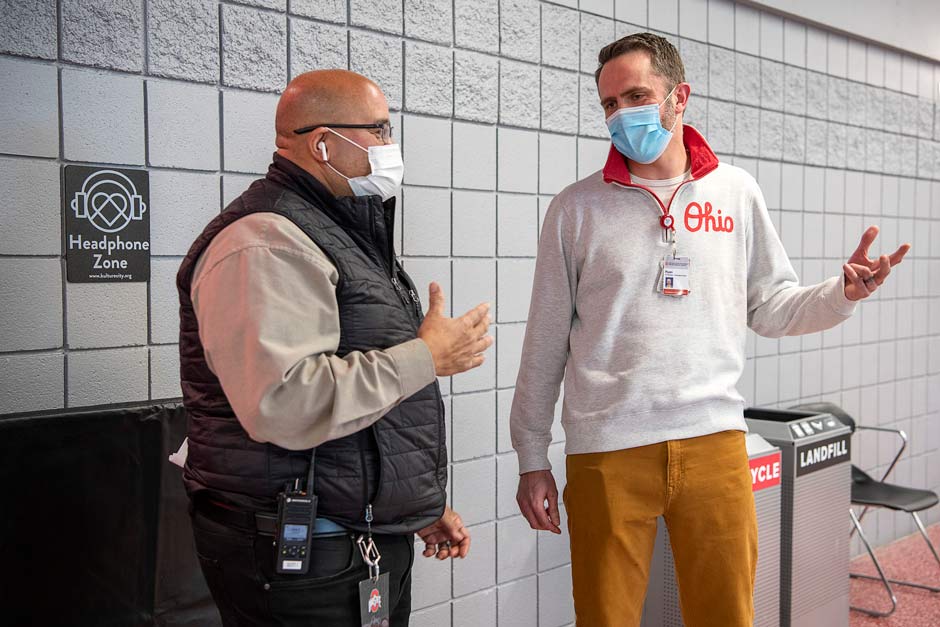
“What’s really been fun has been watching the collaboration between the two groups.”
–Colin Thompson, Associate Athletic Director of Facilities and Events
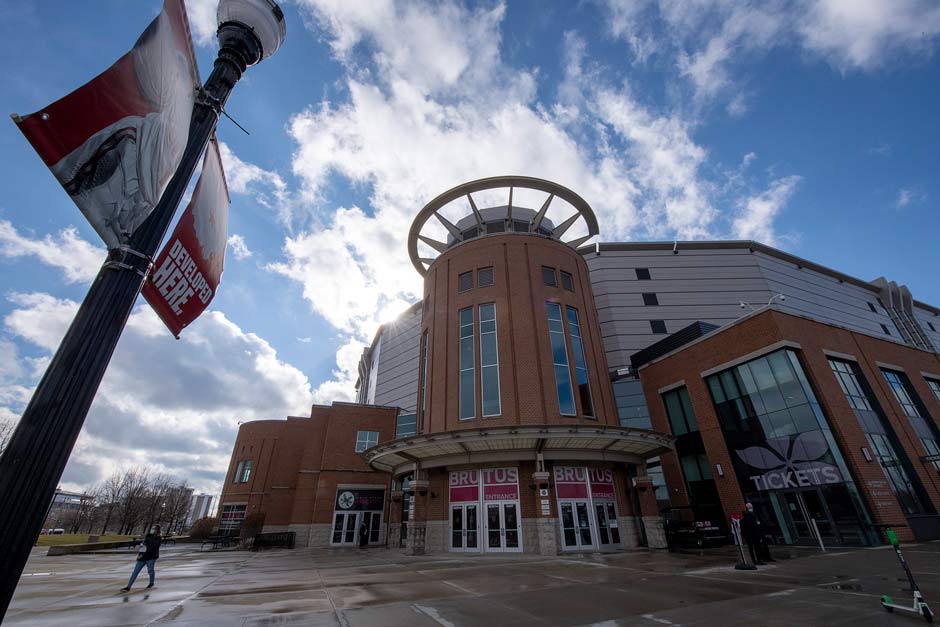
–Crystal Tubbs, Associate Director Department of Pharmacy
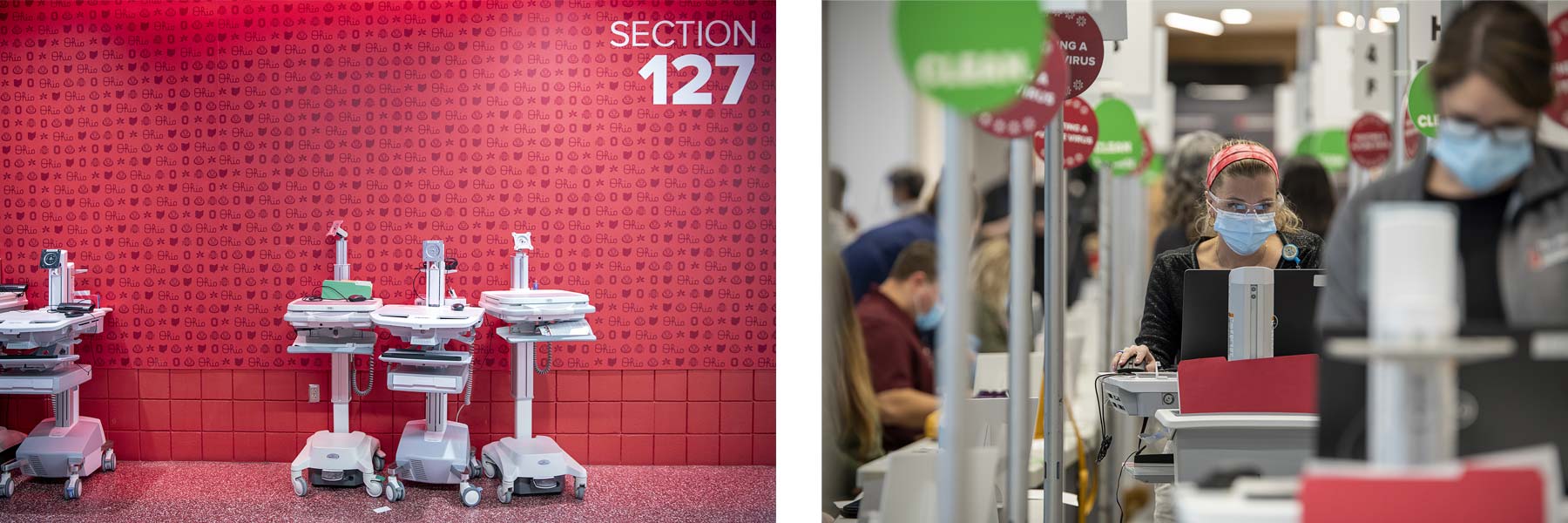 Medical equipment and clinicians have overtaken the Schottenstein Center's northeast rotunda, normally reserved for fans of sporting events and pop stars.
Medical equipment and clinicians have overtaken the Schottenstein Center's northeast rotunda, normally reserved for fans of sporting events and pop stars.Inside the center, the medical side of the operation took over.
The Ohio State Wexner Medical Center sent over freezers to store the ultra-cold vaccines—connecting them to emergency power to avoid any catastrophic outages—and set up two makeshift, state-approved pharmacies for mixing the vaccine and preparing syringes. They also trucked in emergency equipment to prepare for any adverse or allergic reactions.
Information technology experts helped build a secure network to protect medical records, and training at the new site began in earnest. Staff and volunteers came from all across the university—nurses, students, engineers, finance employees, supply chain experts, you name it—all pulling together to get the clinic off the ground.
The finishing touches were a matter of rearranging and repurposing.
The Schott’s 2018 renovation had conceived of such a thing: not a pandemic, of course, but the need to be able to transform the space for really any reason. And so two large concourse dining areas—empty anyway during a season without fans—were cleared to make way for rows of vaccination stations. Floor stickers marking 6 feet of distance were pressed to the terrazzo. Dining tables turned into registration counters. Beer coolers stored the lunches of pharmacists.
A Brutus Buckeye statue donned a white lab coat.
“Through our collective work, we may never truly know the impact,” Tubbs says. “But we can see that we’re participating in something historic. We are saving people’s lives.”
 Frontline staff greet visitors to the Schottenstein Center, where thousands of patients have been vaccinated against COVID-19.
Frontline staff greet visitors to the Schottenstein Center, where thousands of patients have been vaccinated against COVID-19.In all, more than 1,700 patients were vaccinated that first day.
On Jan. 19, the Schottenstein center hosted a men’s basketball game against Purdue and opened Ohio State’s mass vaccination clinic to the public. The home team lost, but there were plenty of victories to go around. A 100-year-old got the first shot of the day and pumped her arms in joy. A son livestreamed his mom’s vaccination as family around the world cried happy tears.
In the weeks that followed, tens of thousands more streamed into the Schott for their shot. For the staff who pulled it off, the joint operation has forged new relationships and brought a deeper meaning to the work—a cause, indeed, greater than any one usher or pharmacist or athletic director.
This article originally appeared in the March 2021 issue of NACDA’s magazine, Athletics Administration.



